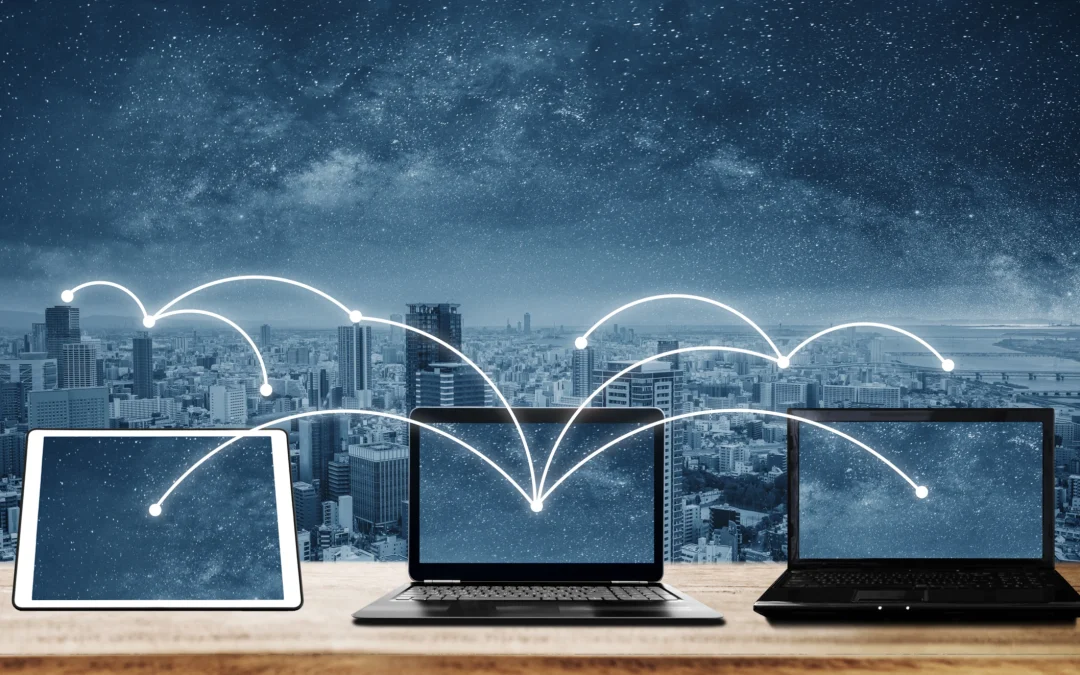Remote Monitoring and Management Tools Disrupting IT for the Better
Remote monitoring and management (RMM) tools are becoming more and more important, especially for managed service providers and IT departments. These tools enable organisations to remotely monitor and manage their information technology infrastructure. That way, systems are always up-to-date, secure and running as they should.

What Are Remote Monitoring and Management Tools?
RMM tools are software applications that actively supervise and manage IT systems for you. They offer functions that can greatly benefit organisations.
For example, they automate patch management so your systems stay protected and current without you or your team members needing to physically intervene. IT admins can also write and execute scripts remotely using RMM tools to automate routine upkeep tasks and address potential issues. Technicians can access client devices remotely to troubleshoot and resolve problems fast, reducing downtime and speeding up problem resolution.
RMM tools simplify software deployment by allowing IT teams to distribute new software and updates to many devices from one location. This gives you consistency and efficiency. It reduces errors and makes systems more reliable. Monitoring and alert systems keep a watchful eye on your IT infrastructure, instantly notifying administrators of issues. That enables immediate action and keeps minor problems from escalating.
Auditing and reporting functions within RMM tools provide insights into system performance, software inventory and security status. These detailed reports keep things transparent, aid in compliance and support good decision-making. Using remote monitoring and management tools, organisations can make sure their IT setup is safe and well-managed.
What Are the Benefits of RMM Tools?
Adopting remote monitoring and management tools brings a lot of advantages:
- Higher efficiency — By automating tasks, RMM tools free up information technology staff to focus on strategic endeavours that boost productivity.
- Better security — Auto patch managing ensures all systems have the latest security patches to minimise cyber threats. Moreover, ongoing monitoring helps in early detection and mitigation of potential security issues.
- Cost savings — With the ability to manage and monitor your systems remotely, there is less need for on-site visits, reducing travel costs and downtime.
- Scalability — RMM tools can grow with your business. Whether managing a few endpoints or a large enterprise network, they adapt to the changing needs of your organisation.
- Improved service quality — Faster response times and proactive maintenance lead to higher customer satisfaction. You can resolve issues before they affect the end user.
- Comprehensive reporting — Detailed reports give insights into system performance. They allow IT teams to make knowledgeable decisions and show value to stakeholders.
Real-World Application
Consider an MSP using a decent RMM tool. The team gets an alert about a potential security gap on multiple client devices. Then, using the tool, they quickly apply patches across all the systems that were affected without disrupting client operations. In the meantime, another team member uses the remote access feature to troubleshoot a software issue of a client, fixing it in minutes.
In another scenario, a large organisation may use scripting to automate their onboarding process for new employees. As soon as a new staff member’s device connects to the network, the remote monitoring and management tool kicks in. It automatically installs all necessary software and applies security configurations. And just like that, their device is ready to use.
The Future of IT Management
RMM tools are changing the way IT services are delivered, making them more efficient, more secure and more cost-effective. Through automating routine tasks and supervising IT systems, these tools empower IT teams to channel energy into growth opportunities and deliver higher-quality service. As technology evolves, the capabilities of RMM tools are likely to expand, further adding value to businesses.
For the latest trends and features in RMM tools, consider exploring detailed reviews and comparisons from trusted sources like SelectHub, TrustRadius and Comparitech. After all, you want to make an informed decision custom to the needs of your organisation.

